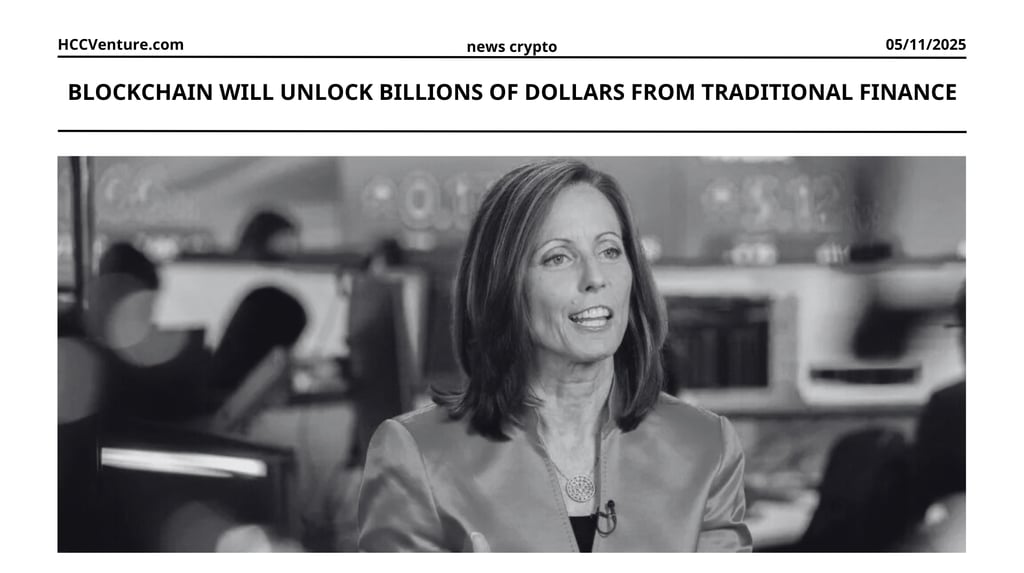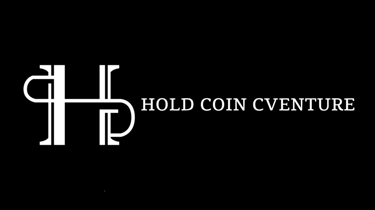Nasdaq CEO Says Blockchain Will Unlock Billions From Traditional
Nasdaq CEO Adena Friedman has laid out a compelling vision for blockchain's transformative role in traditional finance, outlining three key directions that could streamline operations.
11/5/20253 min read


Nasdaq CEO Discussion
At the Swell Conference in New York, Nasdaq CEO Adena Friedman made one of the most definitive statements about blockchain technology to date in traditional finance. Speaking to a packed audience of institutional investors, fintech innovators, and regulators, Friedman emphasized that blockchain is “ no longer an experiment—it’s an infrastructure .”
She outlined three key ways blockchain will transform global finance:
Restructuring post-trade infrastructure to increase efficiency and accuracy,
Revolutionizing the transfer of collateral and the mobility of capital, and
Upgrade global payments systems for instant, cross-border payments.
These statements coincide with a strategic shift for Nasdaq: the exchange has officially filed an application with the US Securities and Exchange Commission (SEC) to test trading in tokenized securities, enabling settlements via on-chain payment channels and distributing digital assets directly to institutional wallets.
Post-Transaction Infrastructure Restructuring
Friedman’s first point targets one of the biggest weaknesses of traditional finance—the fragmented and error-prone post-trade process. Today, confirming, clearing, and settling trades often takes days and involves multiple intermediaries—clearing houses, custodians, and verification agents.
Nasdaq’s post-trade modernization fits into a broader institutional movement. DTCC, SWIFT, and major banks have all experimented with distributed ledger systems for securities clearing in recent years. But Nasdaq’s new pilot program—which involves issuing tokenized equity and debt—could be a foundational step toward fully on-chain capital markets.
Post-Transaction Infrastructure Restructuring
Friedman’s first point targets one of the biggest weaknesses of traditional finance—the fragmented and error-prone post-trade process. Today, confirming, clearing, and settling trades often takes days and involves multiple intermediaries—clearing houses, custodians, and verification agents.
Nasdaq’s post-trade modernization fits into a broader institutional movement. DTCC, SWIFT, and major banks have all experimented with distributed ledger systems for securities clearing in recent years. But Nasdaq’s new pilot program—which involves issuing tokenized equity and debt—could be a foundational step toward fully on-chain capital markets.
Liberating capital through collateral mobility
The second shift Friedman describes—real-time collateral movement—could have equally far-reaching consequences. Currently, billions of dollars of institutional capital are “locked up” daily in clearinghouses, custodians, and margin accounts as part of risk management.
By tokenizing and automating collateral, these assets can be transferred instantly and programmatically between exchanges, lenders, and counterparties, freeing up trapped liquidity across the system.
This concept — often referred to as “ atomic collateral transfer ” — is gaining traction among global financial institutions. It is similar to initiatives like JP Morgan’s Cryptocollateral Network (TCN) and Euroclear’s blockchain settlement system, both of which aim to shorten liquidity cycles in the repo and derivatives markets.
Nasdaq's participation adds to the prestige and reach of this movement, as Nasdaq's trading infrastructure has access to a large portion of global equity flows and listed derivatives.
Transforming Global Payment Systems
Friedman’s third point—modernizing the global payments system—addresses a weakness that has hindered innovation for decades. Cross-border payments still rely heavily on correspondent banking chains, high fees, and settlement delays that can last several days.
Blockchain-based payment systems, especially those that use stablecoins and tokenized fiat currencies, offer a path to instant, traceable, and interoperable payment transactions. Friedman describes this as the “ final bridge ” connecting the digital asset ecosystem to the real economy.
Nasdaq’s filing with the SEC to test tokenized securities trading suggests the company intends to play a role in this transition. The pilot program will allow asset providers to select their preferred online payment method, receive assets directly into a digital wallet, and conduct payment-versus-delivery (DvP) transactions using blockchain verification — a model that could eliminate intermediary risk while improving speed and transparency.
Analyst's perspective
In terms of financial infrastructure, Nasdaq’s blockchain commitment represents a strong institutional backing. The combination of tokenized asset trading, instant collateral movement, and modernized cross-border payments could reshape global market structures as profoundly as electronic trading did in the 1990s.
While many native cryptocurrency platforms focus on decentralized finance, Nasdaq's approach is aimed at " institutional blockchain " - regulated, permissioned, and compatible with existing financial laws. This pragmatic model could serve as a blueprint for integrating blockchain into mainstream finance without compromising compliance or investor confidence.
Disclaimer: The information presented in this article is the author's personal opinion in the cryptocurrency field. It is not intended to be financial or investment advice. Any investment decision should be based on careful consideration of your personal portfolio and risk tolerance. The views expressed in this article do not represent the official position of the platform. We recommend that readers conduct their own research and consult with a professional before making any investment decisions.
Explore HCCVenture group
HCCVenture © 2023. All rights reserved.


Connect with us
Popular content
Contact to us
E-mail : holdcoincventure_contact@hccventure.com
Register : https://linktr.ee/holdcoincventure
Disclaimer: The information on this website is for informational purposes only and should not be considered investment advice. We are not responsible for any risks or losses arising from investment decisions based on the content here.


TERMS AND CONDITIONS • CUSTOMER PROTECTION POLICY
ANALYTICAL AND NEWS CONTENT IS COMPILED AND PROVIDED BY EXPERTS IN THE FIELD OF DIGITAL FINANCE AND BLOCKCHAIN BELONGING TO HCCVENTURE ORGANIZATION, INCLUDING OWNERSHIP OF THE CONTENT.
RESPONSIBLE FOR MANAGING ALL CONTENT AND ANALYSIS: HCCVENTURE FOUNDER - TRUONG MINH HUY
Read warnings about scams and phishing emails — REPORT A PROBLEM WITH OUR SITE.
